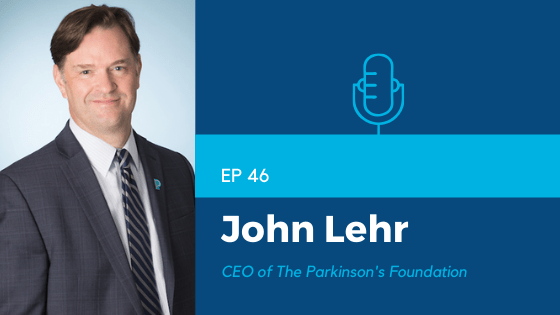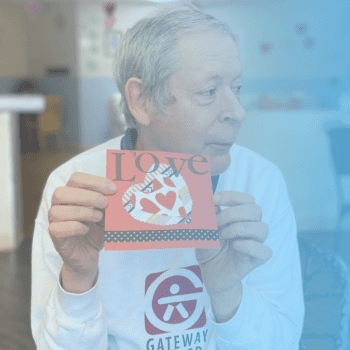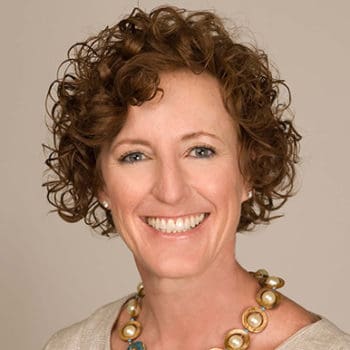In Episode 46 of the Charity Charge Show John Lehr, CEO of the Parkinson’s Foundation, shares insights he’s learned from more than two decades of nonprofit fundraising and management experience as well as strategies for overcoming hard times. John played a pivotal role in merging two legacy Parkinson’s organizations into the Parkinson’s Foundation in 2017. Since then, the Foundation has nearly doubled its revenue to $35 million. Under John’s leadership, the Foundation earned a 4-star charity rating from Charity Navigator and a Platinum Seal of Transparency from GuideStar.
Can you share a bit about your earlier career prior to arriving at Parkinson’s Foundation?
I went to school and I got a master’s degree in history and then I actually went into the Peace Corps, something that I’d always wanted to do. When I left the Peace Corps I started working in database research and then gradually got into grant writing and then into fundraising. This was all in the Philadelphia area at the University of Pennsylvania as well as at The Children’s Hospital of Philadelphia. Eventually, I started to do more high level fundraising and was hired by the Cystic Fibrosis Foundation to run a large national campaign where we raised $175 million over a number of years to accelerate science in cystic fibrosis research.
Raising that money led to some pretty significant breakthroughs and not only transformed cystic fibrosis as a disease, but really paved a way for other disease specific organizations to address the basic underlying aspects of the disease and develop therapies. From there, I actually switched over from direct fundraising to management, going on to run a children’s cancer foundation, a food allergy foundation, and then ultimately ended up at the Parkinson’s Foundation where I’ve been for the last three years. So it’s been a great journey and I couldn’t be happier to work with such an incredible community of people.
In your opinion, what do you think are some of the common themes of a successful nonprofit?
You know, I think it’s important for any organization, regardless of size, to be very clear about what their vision is. Almost every nonprofit I know has a vision statement, which is your big aspirational view on what your organization is trying to do. In our case, it’s ultimately trying to find a cure for Parkinson’s disease. We also know that’s a huge undertaking, so in the meantime, we have our mission, which is to ensure that people are living well with Parkinson’s, and ensuring that our community is maintaining their health, their quality of life, and that they are working through what is a very difficult journey with the resources to make the best of it.
Beyond just our mission and vision, we have what we call our guiding principles. In our case, it’s putting people with Parkinson’s first in any decision we ever make. We ask ourselves, does this ultimately help people with Parkinson’s? A question worth coming back to again and again is:
“What are we doing today, with the resources we have, to advance our mission and ultimately move toward accomplishing our vision?”
If you keep that front and center and keep that focus, it will keep you from making missteps and from chasing shiny objects. I’m just always coming back to why, “Why are we doing this? What is it all about?”
During times of crises, what should organizations really be focusing on?
Before COVID hit, as I mentioned, we were really on pace to have a blockbuster year. We’ve been on a pretty good ride here and we’re very much in growth mode, programmatically and operationally. We were really pushing many, many things forward and it was really a very exciting time. Then obviously COVID hit and very quickly we saw the revenue turn upside down.
“So as you know, the first and most important thing any organization needs to think about is preserving the mission of the organization. In our case, that’s continuing to serve people with Parkinson’s.”
But then also preserving the organization itself and making sure that we are in the best position to weather this tough storm. So we took a number of quick defensive measures. You know, we did a cash flow analysis to have a better idea of how much money we need to have on hand to pay staff and to make sure that the lights stay on. So much of our mission is delivered by our staff and by our team, so we really wanted to make sure that they were taken care of first and foremost. But then we also started forecasting and thinking, “Okay based on the data that we have, how long can we run at this level? How long can we run at that level?” We’re based on an academic fiscal year, July 1st to June 30th. So we’re coming up on the end of our fiscal year and starting to think about budgeting for next year.
So what does that mean in terms of our programs? And the one thing I’ve said to my team or to the team at the Parkinson’s Foundation is, okay, let’s think about priorities. What are the number one priorities? And so my main mantra there is anything that delivers support directly to people with Parkinson’s has to be among our top priorities. If there’s something secondary or tertiary to that, that’s not to say that they’re not important, but we are all about making sure that people with Parkinson’s have the resources they need to live their lives as well as they can during COVID-19 and beyond. So you have to take some defensive measures, you have to preserve your cash, forecast, and try to be as efficient as you possibly can.
How would you compare COVID-19 to previous catastrophes, such as 9-11?
In 2008, I was at the Cystic Fibrosis Foundation and we were just on a high. We had had three to four years of just tremendous success running this campaign to raise $175 million. We were doing really terrifically well and had every expectation that that was going to continue. We were building programmatically, building greater revenue, and then the world sort of fell apart. And I also remember in the fall of 2008, when every day another organization would fall or bank collapse. But these things do pass, and you just have to plan as best as you can. In 2008 and 2009, for charitable organizations, there was a 4% decrease in donations which was tough, right? But then things started to slowly come back. You know, this is an unusual situation– it’s not your typical recession or depression. This is something completely different and it’s affecting the world in ways that we’ve not seen. I think the best thing to do is plan, preserve your cash, and rely on your board who cares most about you in terms of your financials. Lean on them to help you through the tough times so that you can get through and get to the other side. So that’s kind of the approach we took back in 2008 when I was at Cystic Fibrosis Foundation and it is the same approach we’re taking today.
Where can people find more information on the Parkinson’s Foundation?
Our website is Parkinson.org. Then for anybody who has questions about Parkinson’s or might be concerned about Parkinson’s, we have a toll free helpline: 804-PD-INFO. We have a terrific team of professionals that will answer any questions you have about Parkinson’s. They are there to talk to you and to listen.





